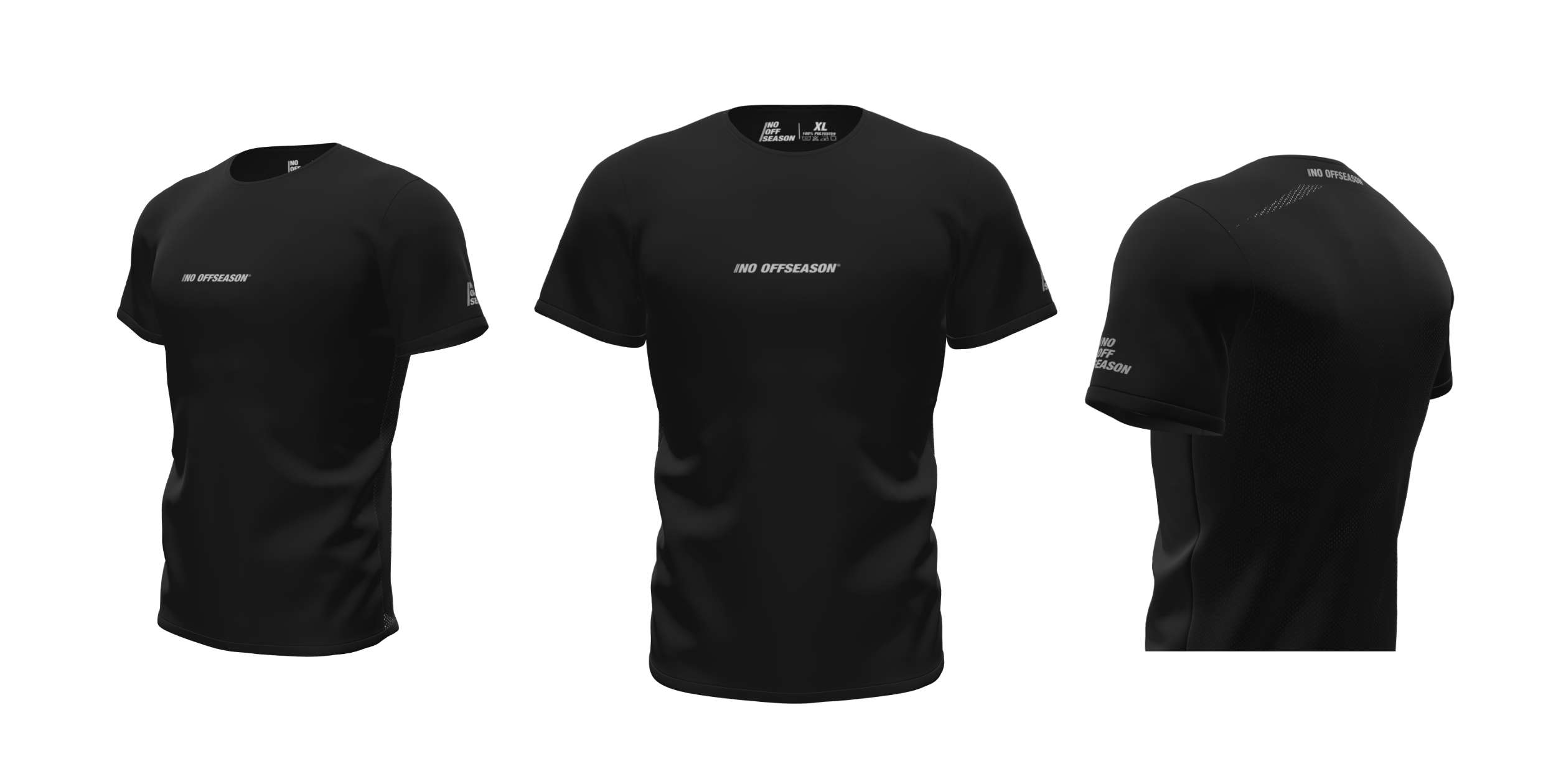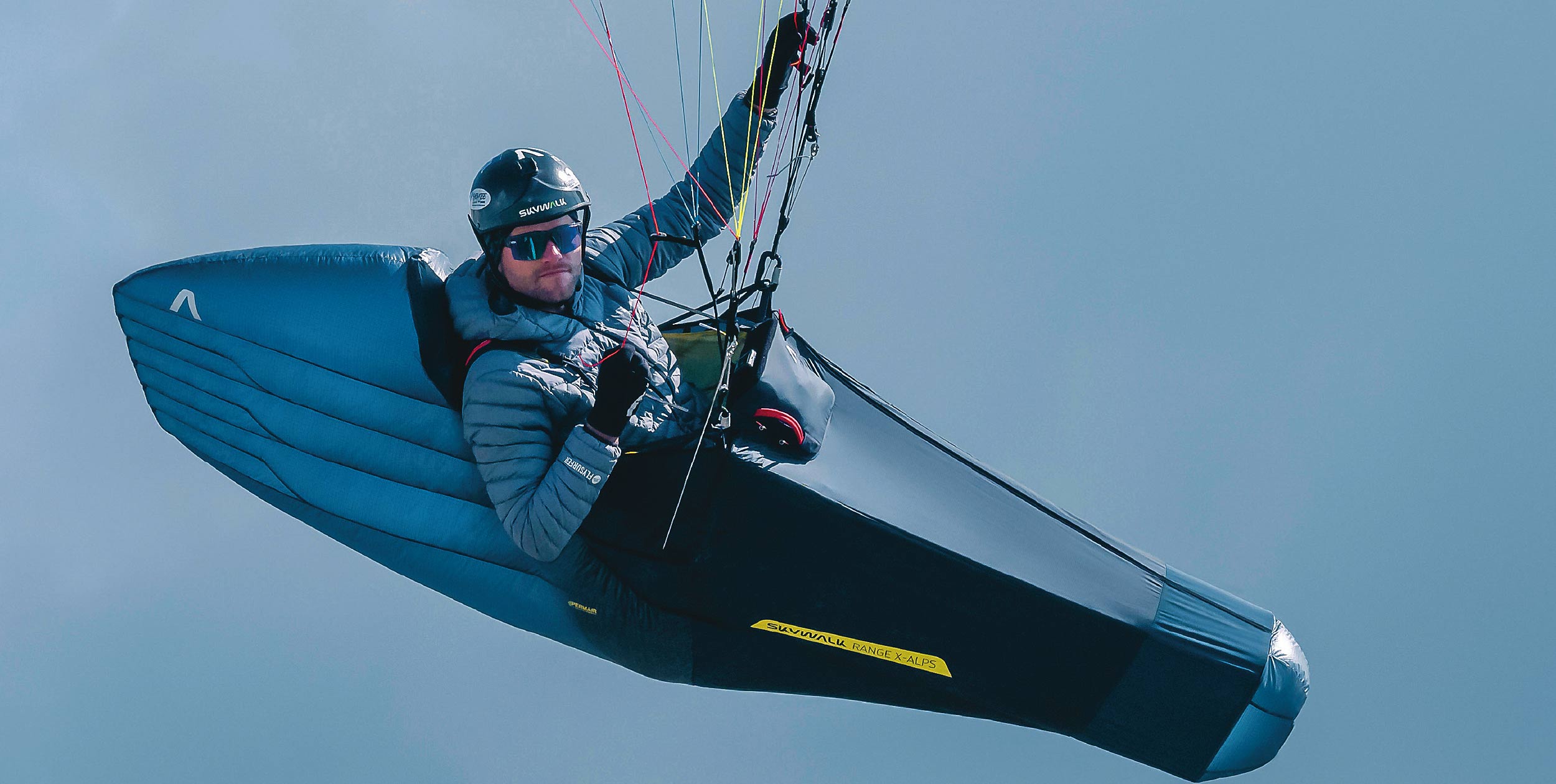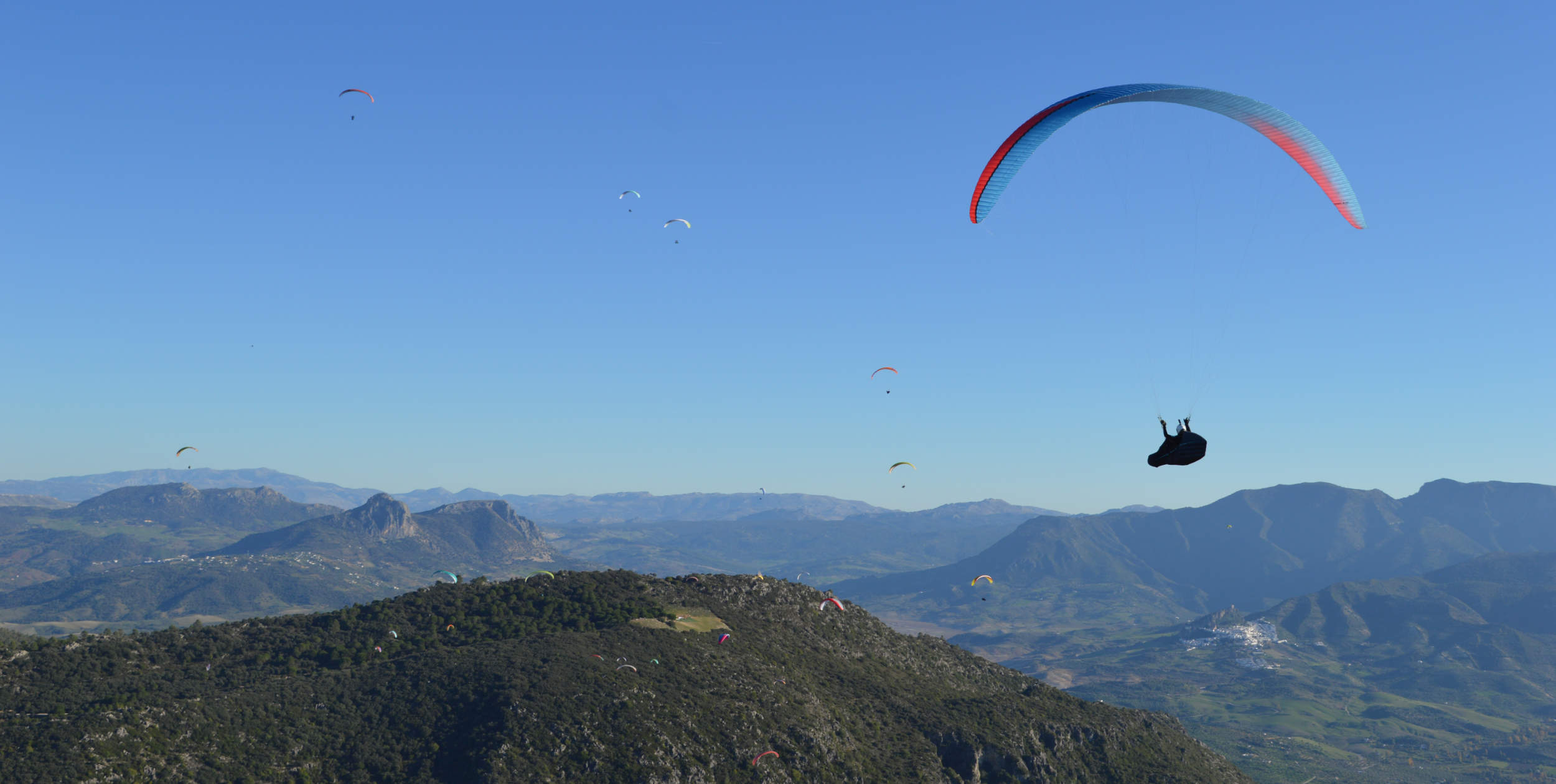Ten years ago this month Cross Country magazine’s news editor Charlie King was getting ready for an alpine hike-and-tandem-fly from the summit of Western Europe’s highest peak, Mont Blanc. Here’s her guide to getting ready to climb-and-fly from the roof of Europe.
A thing of beauty, the big white snow dome at the top of Mont Blanc is visible for miles around, technically not overly difficult to climb and somewhat alluring. Yes, I know there are many, many beautiful peaks to climb, that are less crowded, and litter-strewn than this; and yes, I’ve heard that the scene on leaving the refuge in the darkness of early morning (the middle of the night, most of us would call it) is a continuous train of head-torches; yes, it’s a long way from the peace and solitude of climbing a smaller, less known summit, but somehow it still beckoned.
The preparations for the trip were many-fold. We needed to decide which route to take, book the appropriate refuge (bearing in mind that we are going out of season, and not all refuges would still be manned); there was kit to gather together and test-fly (can you fit that rope anywhere, and where on earth do you stash an ice axe in flight?). For me, the most difficult and nerve-wracking part of the preparation was learning to fly tandem. My flying partner Guy was very tall (6’4” or 193 cm), and we would be launching on snow in thin air, just to add to the challenge. And time was getting short…
Téo Bouvard hikes and flies from the summit of Mont Blanc
Training and gear
I started my tandem training with my friend Nicol, a willing volunteer who is a similar size to me, on a lovely docile wing. However, Guy is bigger so I needed to move to a tandem wing and a tall passenger. My husband, Marcus, fitted the tall bill nicely, and was also willing to be strapped to the front of me. The kind people at Little Cloud came to our rescue with the loan of a lightweight tandem, their then new Bidule. At 6.2 kg it was lighter than some solo wings, and Guy and I would share the load on the climb – one of us carrying the wing whilst the other planned to take the harnesses and spare clothing.
Nicol and I got onto the Bidule the day after it arrived, with a lovely morning flight at St André-les-Alpes. Even in my very inexpert hands, it launched very easily, the wing rising slowly and surely, and easily sitting overhead whilst we got ready for the off. It was beautiful in the air, and thankfully less speedy on landing than I had feared, even in nil-wind, and even with Marcus and I on it. I did still need to work on the timing of my landing flare, which needed to take into account someone else’s legs touching down before mine.
Harness-wise we had a lightweight reversible Woody Valley with split legs, ideal for the purpose, and we planned to raid the Cross Country stores for the smallest, briefest second harness we could find that would be comfortable enough for the hour’s descent flight. Guy was working overseas and not due back until the week before the off, so whilst I would do as much tandem as I could with anyone who’d let me take them, it would be a last-minute intense course for him, to take him on his first ever flights and find him a comfortable harness.
For training purposes, I packed myself a separate ‘training kit’ with my Ozone Ultralite 19 in the Woody Valley rucksack to enable me to get used to carrying it up hills, and flying down with it (though solo this time). I included rope, axes and crampons for the exercise and to ensure they will fit in a harness to be flown down again, although they wouldn’t actually have to be carried in a rucksack on the day as they would be in use. Likewise some of the clothing and the helmet would be in use, so the sack would be lighter than I had been training with.
In terms of physical training, it’s really endurance that is the key. The ideal is probably to go for regular long walks carrying weight, hence the training kit, though in reality it’s hard to fit too many of these sessions into an already busy life, so I more often went for runs and hoped that the aerobic training would be of some help overall. I trained for and ran the Mont Blanc marathon at the end of June and hoped that some of the stamina gained would still be there.
Route choice
So then, the itinerary. Firstly, which route? There are two obvious choices if starting from Chamonix: the voie normale, via the Gouter refuge and Bosses ridge, or the Trois Monts route which starts at the Cosmiques refuge and goes over the shoulders of Mt Blanc de Tacul and Mt Maudit.
The former is graded PD (peu difficile) and is really a two-day affair, as it involves several hours’ approach to get to the Goûter refuge (3,817m), and is then a four-and-a-half hour climb on ‘summit day’. The latter is PD+ and is conveniently accessed from the Cosmiques refuge, a half-hour walk from the top of the Aiguille du Midi cable car. It is then around a six or seven-hour walk on summit day.
What are Mont Blanc’s mountain huts like?
On further investigation, I discovered the Goûter refuge was likely to be unmanned by mid-September, and the top part of the Mont Blanc Tramway to the Nid d’Aigle, the usual disembarkment point for people heading to the Goûter refuge, was closed for maintenance. The Cosmiques refuge, however, was manned until mid-October and we knew we could happily base ourselves there for a couple of days whilst acclimatising (so saving some uplift fees), so the Trois Monts route seems to be the most sensible choice for us.
In terms of acclimatisation, it is an inexact science and we only had a certain number of days available to us. Generally on Mont Blanc, it seems to be recommended to spend at least two days and one night at altitude before the night of the summit attempt, although I think the longer you can spend up high, the better.
Our original plan was to climb the Petit Aiguille Verte as one of our acclimatisation routes, with the possibility of flying down from the Grands Montets afterwards (assuming the snow was still in such a condition for this to be possible by the time we had finished the route). However, the Grands Montets cable car shut on 12 September so this was not possible. So it made sense to base ourselves at the Cosmiques refuge for two nights, from where we could do a couple of acclimatisation days before attempting the big one on the third day. These routes would also give us the opportunity to brush up on alpine techniques, using ice axes and crampons and moving roped together.
How to do it really, really fast! From summit to landing in 15 minutes
Kit-list
Packing for the mountains can be tricky: while you’ll be exercising and need to not overheat, it will definitely be cold at altitude. A temperature drop of 6 – 7 degrees Celsius every 1,000 m climbed is quoted, so at 5,000m you can expect the temperature to be 30 – 35 degrees colder than at sea level. And that’s on a good-weather day and without taking wind chill into account. There’s always the possibility of the weather changing for the worse, tiredness or injury (pray not) that could mean you’ll easily get cold.
Conversely, you don’t want to carry more than you have to. I have climbed with people who take cut-off toothbrushes to save weight, so carrying around extra woollies for no reason is definitely not a good idea. So, after some consideration my clothing kit list was as follows:
- Base layer, long sleeved wicking top and Ron Hill bottoms
- Softshell jacket or fleece
- Waterproof jacket and trousers (lots of people use gaiters too)
- Loft jacket
- Gloves and liners, spare gloves (I actually have dropped a glove over an abyss mid-route before)
- Ski socks
- Hat (to fit under helmet) or balaclava
- Mountain boots suitable for cold weather and crampons
- Ice axe
- Crampons and anti-ball plates
- Helmet, head-torch and batteries
- Map, compass, whistle & guidebook
- Rope (two between the party of five)
- Harness with belay device, two slings, two prussiks, ice screw, spare karabiners
- Water bottles (I decided to take actual bottles rather than a plastic drinks hose system in case the tube freezes up)
- Tandem, two harnesses and spreaders
- Camera
- Phone (charged with battery and credit)
- Suncream and lip salve
So that was the plan. Now all we had to do was turn our dream into reality.








